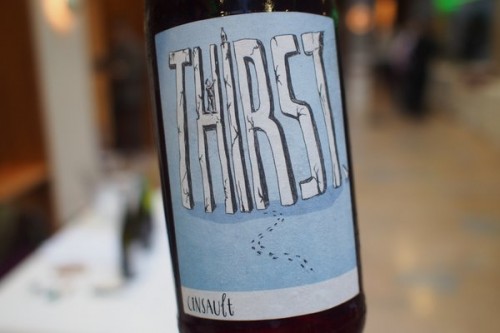
Cinsault used to be the most widely planted red grape variety in the Cape, responsible for many of South Africa’s most ageable wines (it was often an undisclosed blending component, and reds with it in the mix usually benefited). It was seen as a workhorse, though, and now there are just under 2000 hectares left. But quite a proportion of this is old vines, and winemakers are beginning to realize that it’s ideally suited to South Africa’s largely warm climate wine regions.
It makes two types of wine. On its own: elegant, lighter-coloured vins de soif. Drinkable wines. Its high yields help: we all need affordable drinking wines (and yields certainly help on the affordability front). And lighter red wines are fashionable now. Which is great: I really enjoy Cinsault when it’s done well.
Then, in blends: Cinsault can add perfume, freshness, restrained alcohols and nice spiciness to blends. These can be much more serious wines. And a few producers are now starting to make these wines, in a homage to the great Cape reds of the past.
Here’s an example of brilliant drinkability from Radford Dale, a producer working more naturally, and who deserves more credit than they get. They also make a brilliant Gamay, too, in a similar style.
Radford Dale Thirst Cinsault 2015 Stellenbosch, South Africa
From a 4 hectare vineyard owned by the Bredell family, planted in 1989. Whole bunch fermentation, with no sulfur dioxide added until bottling (40 mg/l). Vivid colour. Fresh, juicy and bright with lovely mineral, stony notes under the joyful, thirst-quenching fresh cherry and plum fruit. There’s a bit of grip here too. Just so fresh and tasty. 91/100
Find this wine with wine-searcher.com
3 Comments on Pure drinkability: Radford Dale Thirst Cinsault 2015
I agree with every word. Lovely stuff! I believe this wine (and most of its type) should be cooled down quite a bit before drinking. In our current (SA) heatwaves, even cooled right down to “white wine drinking temperature”. It’s also pretty cool to see a 2015 red wine throwing out proper sediment.
I see that Michael Fridjhon has scored this 72/100
Michael Fridjhon’s 100-point scale is different from everyone else’s. It’s arguably a better scale, but it ultimately makes his scores irrelevant within a global (even local) context.